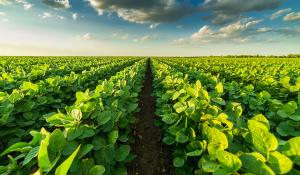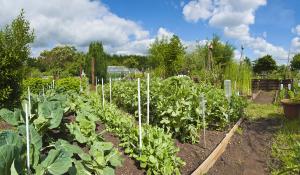What is Regenerative Agriculture?
In order to keep global warming to two degrees Celsius or less, we need to radically reduce the amount of human-caused carbon dioxide being released into the atmosphere. We also need to start sequestering the excess carbon that’s already there. Regenerative agriculture is the single best way to do this.
Excess carbon in the atmosphere contributes to climate change, but carbon in the soil acts as a fertilizer. After decades of industrial agriculture, our farmlands are lacking this important element. Regenerative agriculture uses practices that pull excess carbon from the air and transfer it underground—storing carbon and re(storing) agricultural soils:
-
Crop Rotation and Cover Cropping
-
Composting
-
Zero to Low Tillage and Mulching
-
Planting Perennials and Diverse Crops
-
Managed Grazing
Many of these methods have rich agricultural histories, and are being employed in this new era of regenerative agriculture in the face of a the new issue of climate change. The common thread throughout all of these methods is soil health. Regenerative agriculture recognizes that it's the root systems and communities of soil microbes that are the heavy lifters, both in growing food and sequestering carbon. That said, the benefits of regenerative agriculture radiate out much farther, with local and on-farm benefits that go beyond carbon sequestration and rich soils to support healthy communities, vibrant ecosystems, and productive farms.
Green America takes an active role in the fight for healthy soils and a cooler planet. Our Center for Sustainability Solutions works closely with farmers, researchers, and representatives from all parts of the farming world to support a transition to regenerative agriculture. We envision a robust and resilient food system that regenerates soil health to restore climate health, water quality, and biodiversity all while creating food security, rural livelihoods, and better nutrition for families.
The 20th Century relied heavily on industrial agriculture that has harmed our lands, water, and people. Regenerative agriculture is the way forward, bringing ecology, climate science, and human well-being to the forefront of farming, ensuring healthy agriculture and a hospitable planet for generations to come.
Looking for a deeper dive? Check out our Regenerative Agriculture FAQ!
"Regenerative agriculture provides answers to the soil crisis, the food crisis, the health crisis, the climate crisis, and the crisis of democracy." - Vandana Shiva
















